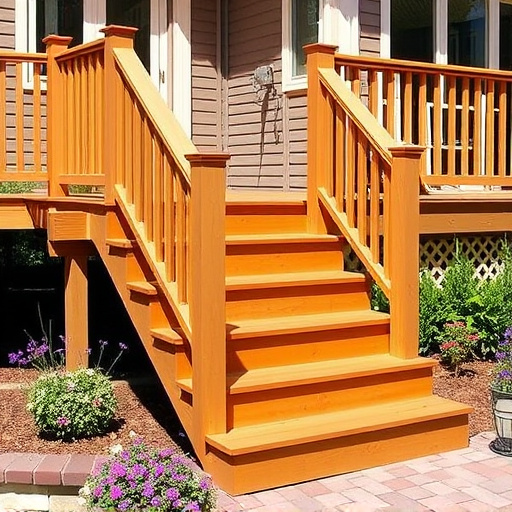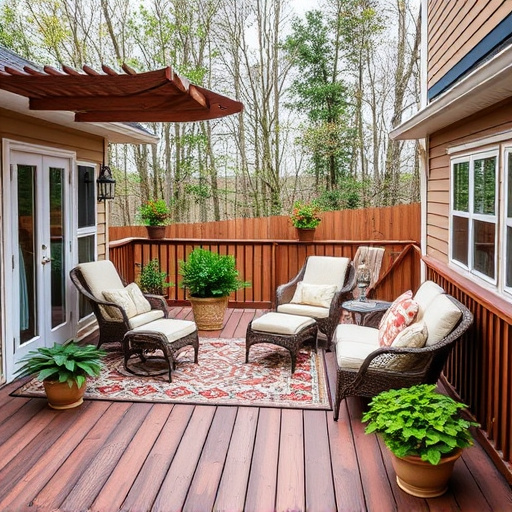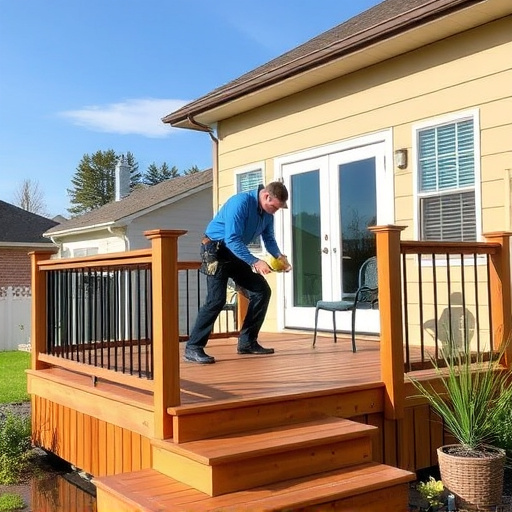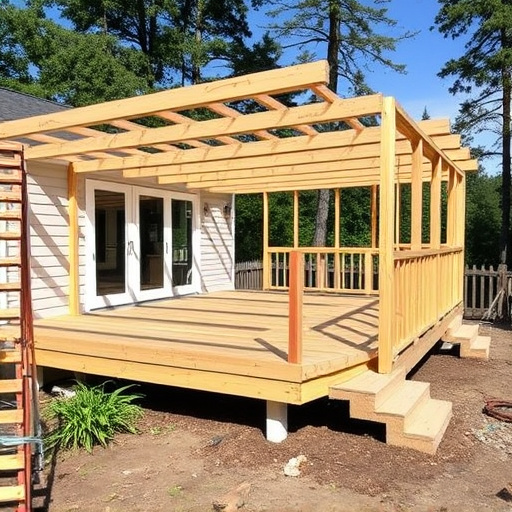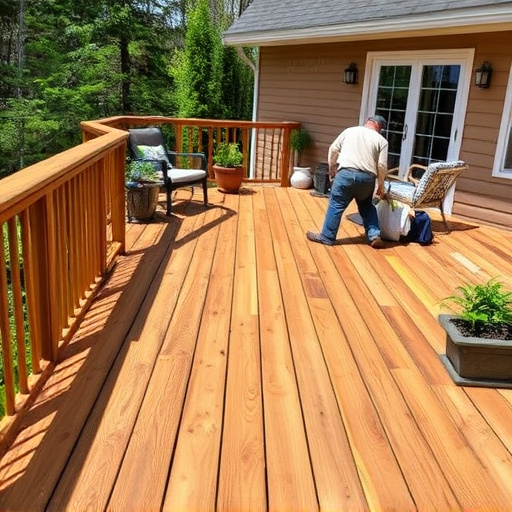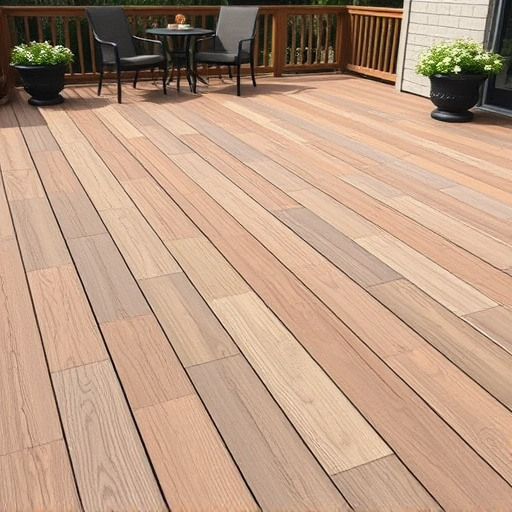Commercial decking designed to ADA regulations is crucial for safe, accessible public spaces. Requirements include wheelchair clearances, ramp/elevator access, grab bars, slip-resistant surfaces, handrails, and tactile signs. Compliance involves expert consultation, regular maintenance, and adherence to building codes, ensuring inclusive, legal, and enjoyable outdoor spaces for all visitors.
“In the realm of commercial construction, ensuring accessibility is paramount, especially on outdoor decks. With an increasing focus on inclusivity, ADA (Americans with Disabilities Act) regulations play a crucial role in designing and installing safe, accessible decks.
This article navigates the key aspects of commercial decking that comply with ADA standards, offering insights into understanding these regulations, considering design elements for accessibility, and implementing best practices to ensure safety and adherence.”
- Understanding ADA Regulations for Commercial Decks
- Key Considerations for Accessible Deck Design
- Best Practices for Compliance and Safety
Understanding ADA Regulations for Commercial Decks
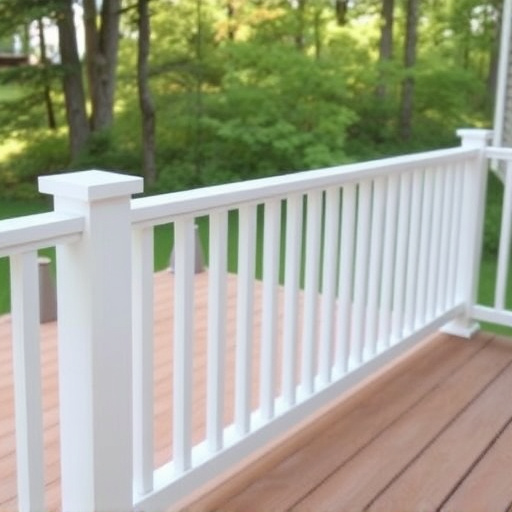
Commercial decking that complies with ADA (Americans with Disabilities Act) regulations is crucial for ensuring accessibility and safety in public spaces. These regulations outline specific requirements for building and designing commercial decks, focusing on providing equal access to individuals with disabilities. For instance, ADA guidelines mandate adequate clearances for wheelchairs, ramp or elevator access, and grab bar installations, among other features. Compliance not only ensures legal adherence but also reflects a commitment to inclusive design, enhancing the overall user experience.
Understanding these regulations is vital for commercial decking projects, as they involve intricate details such as surface textures, color contrast, and slope inclinations. A comprehensive approach includes consulting with experts in roof consulting and commercial roofing who can guide on selecting suitable materials, designing safe navigation paths, and incorporating essential accessibility features. Regular maintenance and inspections are also key to ensuring the deck remains ADA-compliant, particularly when considering long-term solutions like roof replacement.
Key Considerations for Accessible Deck Design
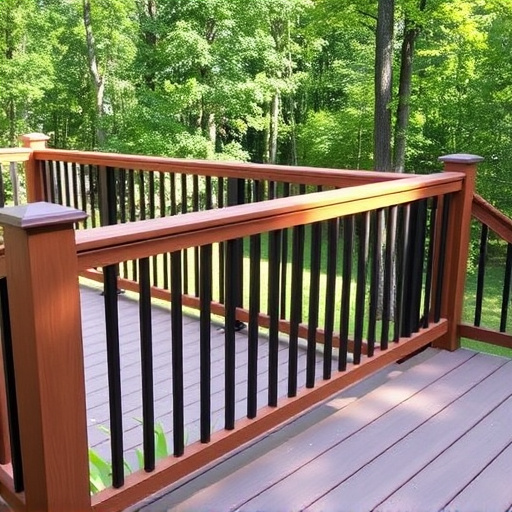
When designing a commercial decking project that complies with ADA (Americans with Disabilities Act) regulations, several key considerations come into play. First and foremost, ensure the deck has adequate clear space for wheelchair access and maneuverability. This involves sufficient width and length to accommodate wheelchairs and other mobility aids comfortably. The surface of the deck should also be slip-resistant to provide safe passage, especially in wet conditions.
Handrails are another critical aspect of accessible deck design. They must be securely fastened and positioned at the appropriate height to offer support and guidance for individuals with balance issues or vision impairments. Additionally, consider incorporating tactile surfaces or braille signs to assist visually impaired users. A well-planned and compliant commercial decking project not only meets legal requirements but also fosters inclusivity, ensuring everyone can enjoy the outdoor space safely and comfortably.
Best Practices for Compliance and Safety
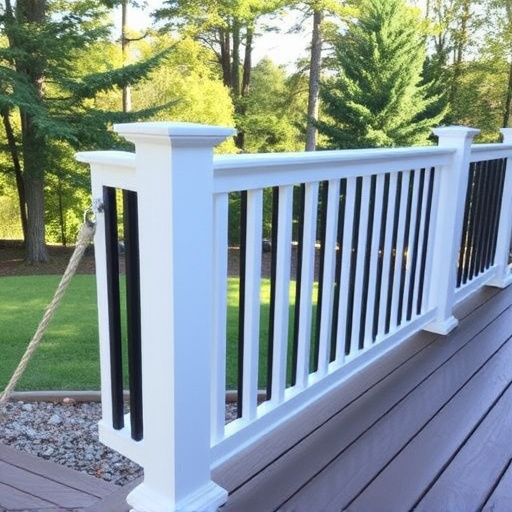
When it comes to commercial decking that complies with ADA (Americans with Disabilities Act) regulations, best practices for compliance and safety are paramount. One of the primary considerations is ensuring seamless accessibility for all users. This involves incorporating features like slip-resistant surfaces, adequate clearance for wheelchairs, and handrails at appropriate heights. Regular inspections and maintenance are essential to keep the decking in pristine condition, addressing any potential hazards promptly.
Moreover, integrating robust lighting solutions can significantly enhance safety, especially in areas with high foot traffic or where users may need to navigate after dark. Proper drainage systems should also be implemented to prevent pooling water, which could cause slips or falls. For businesses offering both commercial and residential roofing services, it’s crucial to understand local building codes and incorporate these standards into decking designs to ensure compliance, thereby providing a safe and enjoyable space for all visitors.
When designing and installing commercial decking, adhering to ADA regulations is not just a legal requirement but also ensures that everyone can safely enjoy these spaces. By understanding the key considerations and best practices outlined in this article, you’re well-equipped to create accessible decks that enhance user experience for all. Commercial decking done right means compliance, safety, and inclusivity.








